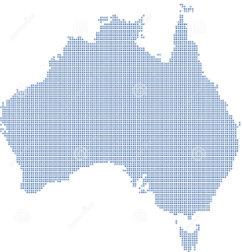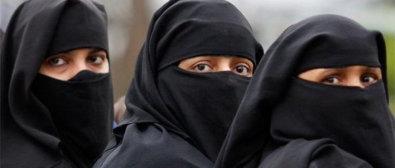The Afgan War By Rares Zavaleanu
Prelude On December 24, 1979, Soviet tanks rolled across the Amu Darya River and into Afghanistan, ostensi‐ bly to restore stability following a coup that installed a pair of Marxist-Leninist political parties, the Peo‐ ple's (Khalq) Party and the Banner (Parcham) Party. However, the Soviet presence sparked a nationwide rebellion led by fighters known as mujahideen who saw Islam as a unifying source of inspiration. These fighters received extensive covert support from Pak‐ istan, Saudi Arabia, and the United States, and they were joined in battle by foreign volunteers (who soon formed a network, known as al-Qaeda, to coor‐ dinate their efforts). The Soviet forces were driven out of the country in 1989 as a result of the guerrilla war. In the absence of the Soviets, the mujahideen overthrew Afghanistan's Soviet-backed government and in‐ stalled a transitional government. However, the mujahideen were politically divided, and the armed conflict escalated in 1994. The Tal‐ iban rose to power and took over Kabul in 1996. It imposed a harsh interpretation of Islamic law, for ex‐ ample, forbidding female education and prescribing hand severing or even execution as punishment for minor offenses. That same year, after being expelled from Sudan, alQaeda leader Osama bin Laden was welcomed to Afghanistan and established his organization's headquarters there. By the summer of 2001, the Tal‐ iban had gained control of more than 90 percent of Afghan territory with the support of al-Qaeda. On September 9, that year, al-Qaeda hit men assas‐ sinated famed mujahideen leader Ahmad Shah Ma‐ soud, who was leading the Northern Alliance (a loose coalition of mujahideen militias that main‐ tained control of a small section of northern Afghanistan at the time) in its fight against the Tal‐ iban and had unsuccessfully sought greater US sup‐ port for his efforts.
8
9/11, or how the war started On September 11, 2001, at 8:45 a.m. on a clear Tuesday morning, an American Airlines Boeing 767 carrying 20,000 gallons of jet fuel crashed into the north tower of the World Trade Center in New York City. The impact ripped a gaping, burning hole near the 80th floor of the 110-story skyscraper, killing hun‐ dreds instantly and trapping hundreds more on higher floors. As the evacuation of the tower and its twin began, television cameras broadcast live images of what appeared to be a freak accident at first. The collision resulted in a massive explosion that rained down burning debris on nearby buildings and onto the streets below. It was immediately clear that America was under attack. As millions of people watched the events in New York, American Airlines Flight 77 circled over down‐ town Washington, D.C., before crashing into the west side of the Pentagon military headquarters at 9:45 a.m. The jet fuel from the Boeing 757 caused a devastat‐ ing inferno, resulting in the structural collapse of a portion of the massive concrete building that serves as the headquarters of the United States Depart‐ ment of Defense.
The skyscraper's structural steel, designed to with‐ stand winds of more than 200 miles per hour and a large conventional fire, could not withstand the tremendous heat generated by the burning jet fuel. The north building of the twin towers collapsed at 10:30 a.m. Only six people survived the collapse of the World Trade Center towers. Almost 10,000 other people were treated for injuries, many of which were se‐ vere. The hijacking and crash of four American jetliners drew immediate attention to Afghanistan. Al-Qaeda had claimed the attack, and some of the 19 hijackers had trained in Afghanistan. Following the attacks, President George W. Bush's administration converged on a strategy of first oust‐ ing the Taliban from Afghanistan and dismantling alQaeda, while others considered actions in Iraq, in‐ cluding long-standing plans to depose President Saddam Hussein. When Taliban leader Mullah Mo‐ hammed Omar refused to “deliver to the United States authorities all the leaders of al-Qaeda who hide in your land,” US officials began implementing a war plan.
The campaign in Afghanistan began covertly on September 26, with a Central Intelligence Agency (CIA) team known as Jawbreaker arriving in the country and launching an overthrow strategy with anti-Taliban allies. The CIA team was quickly joined by special forces contingents from the United States and the United Kingdom, and together they provided arms, equipment, and advice to the Afghans. They also assisted in the coordination of targeting for the air campaign, which began on October 7, 2001, with US and British warplanes pounding Taliban targets, officially launching Operation Enduring Freedom. Northern Alliance forces began to take over a series of towns previously held by the Taliban in late Octo‐ ber. The forces worked with US assistance, but they defied US wishes when they marched into Kabul on November 13 as the Taliban retreated without a fight. Kandahar, the largest city in southern Afghanistan and the Taliban's spiritual home, fell on December 6, bringing the Taliban's reign to an end. One of the final major battles of the first phase of the war occurred in March 2002, when US and Afghan forces fought 800 al-Qaeda and Taliban militants in the eastern province of Paktia. The operation also marked the entry of troops from other countries into the conflict, with special operations forces from Aus‐ tralia, Canada, Denmark, France,
In total, 125 military and civilian personnel, as well as all 64 people aboard the airliner, were killed in the Pentagon. The horror in New York took a catastrophic turn less than 15 minutes after the terrorists struck the nerve center of the US military, when the south tower of the World Trade Center collapsed in a massive cloud of dust and smoke.
9






